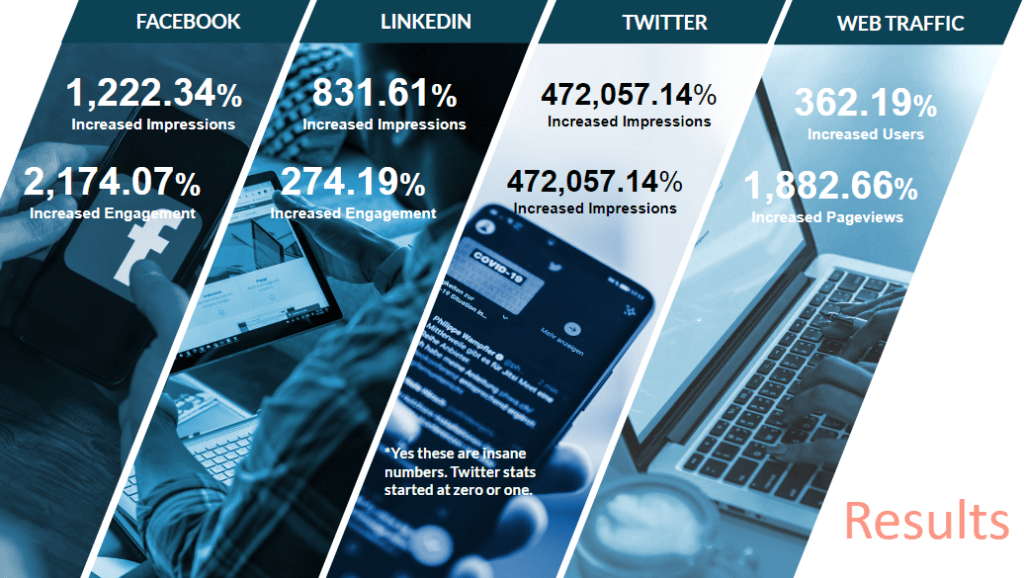- +1 512-591-8295
- [email protected]
- Mon - Fri: 9:00 - 16:00
- +1 512-591-8295
- [email protected]
- Mon - Fri: 9:00 - 16:00

The marketing rule of 7, also known as the “rule of seven touches,” states that a potential customer needs to come into contact with a message at least seven times before they even notice it, or will consider making a purchase. This rule is based on the idea that it takes multiple impressions or interactions for a message to be fully absorbed and acted upon by a consumer.
The rule of 7 can be applied in a variety of ways. For example, a company might send out seven emails to a customer over the course of a month, or place seven ads for their product on social media. The key is to be consistent and persistent in the messaging and to use different mediums to reach the customer.
Another important aspect of the rule of 7 is that it applies to the customer’s journey. A customer may not be ready to buy a product or service when they first come into contact with it. By reaching out to the customer multiple times and building a relationship, a company can increase the chances that the customer will eventually make a purchase.
It’s important to note that the rule of 7 is not a hard and fast rule and the number of touches may vary depending on the product or service and the target audience. But it’s a good principle to keep in mind when developing a marketing strategy.
The marketing rule of 7 can be applied to social media in a variety of ways. Social media platforms offer a wide range of opportunities for companies to reach out to potential customers and build relationships with them.
One way to apply the rule of 7 on social media is through consistent and persistent posting. A company can create a content calendar and post relevant and valuable content to their social media accounts at least seven times a week. This can include product or service information, industry news, and customer testimonials. By consistently posting, a company can increase the chances that a potential customer will remember their brand and eventually make a purchase.
Another way to apply the rule of 7 on social media is through advertising. A company can create and run social media ads targeting their ideal customer at least seven times over the course of a month. This can include sponsored posts, promoted stories, and display ads. By reaching out to a potential customer multiple times through ads, a company can increase the chances that the customer will remember their brand and eventually make a purchase.
Short answer: yes.
To maximize the effectiveness of your marketing efforts, it is a best practice to share the exact same message on social media at least 7 times, including sharing the same message on multiple platforms.
Sharing the same message across multiple platforms ensures that the prospect sees the message multiple times, increasing the chances that they will remember the product or service and eventually take action. For example, if a company posts an ad for their product on Facebook, Instagram, and Twitter, they increase the chances that the prospect will see the ad at least 7 times.
Additionally, by sharing the same message across multiple platforms, a company can also reach a wider audience. Each social media platform has its own unique audience, and by sharing the same message on multiple platforms, a company can reach a larger number of potential customers.
The same message can also be shared at different times and days, in order to reach different people and increase the chances of the prospect seeing the message.
Contrary to what you may hear recommended, it is beneficial to share the same message not only on multiple platforms, but also multiple days.
Some strategies you see online say to never repeat a post, or to do so sparingly, arguing that it is better to come up with original content each time and that resharing posts – across platforms, or on the same platform more than once, or both – may drive followers away or result in algorithmic penalties.
The data doesn’t support that.
What the data does says is something very different – that you NEED to share multiple times. According to research that CoSchedule completed by sharing an exact same post 7 days in a row, they found that sharing the same social post multiple times drove 192% more click-throughs, and in their study, clickthroughs and engagement didn’t suffer on the subsequent days.
CoSchedule’s study also found that it takes at least 12 “touchpoints” on any single message to drive a single conversion – much more than 7, and closer to the 11 that I’ve always recommended.
Guy Kawasaki, who always shares solid marketing advice (unlike some other well known names) also recommends repeatedly sharing your posts.
When you look at sharing your blog posts on social media, I have read a guideline at some point in the past that you will generate the most interest and traffic if you share your blog post on your social networks every day for the first week, 2 to 3 times the next week, once a week for a month after that, and then once a quarter ongoing.
While I’ve never done it quite that frequently, research shows that whenever you create a new blog article, like this one, that it should be shared daily over the course of a week, and then again a few more times over the course of the next several months.
Our own research has proven these recommendations, especially when content is integrated across website, social media, email newsletter, and syndicated further. We go by our own rule of thumb
“7 Times, in 7 Places, in 7 Days”
This is pretty self-explanatory – across the course of 7 days after publishing, a sweet spot is to share the post at least 7 times on 7 different platforms … and ideally more as fully syndication gets better results.
Here’s an example of results that strategies of resharing content have had on social media and traffic to the website after just a few months for a client:

Hang on … we’re switching from social media to children’s shows. Why? Because they research and understand how human brains work. Yes! And we’re going to visit for a minute with my kids’ favorite cartoon dog, Blue.
The creators of Blues Clues built upon the work that had been done by Sesame Street and Mr. Rogers and were able to take the results a step further with their research. What they found is that it’s the repetition that allows children to learn the information better.
Malcolm Gladwell attended a research meeting for Blues Clues, which he discusses in The Tipping Point. (I recommend any and all of his books – they withstand the test of time.)
Blues Clues made an unusual recommendation to Nickelodeon, something that had never been done before: repeating the same exact show with the same information to children 5 days in a row. And the executives at Nickelodeon were willing to take the risk.
There’s psychology behind children’s education shows, and psychology behind marketing, and it’s no surprise that they overlap. Sound like the marketing rule of 7?
This approach was measurable, as studies have shown that children who watched “Blue’s Clues” had better recall and understanding of the information presented in the show than children who watched other educational shows. For example, one study found that children who watched “Blue’s Clues” performed better on tests of spatial skills, such as matching shapes and arranging blocks, than children who watched “Sesame Street,” which did not repeat the same information as often.
Repetition works – from a young age, and our brains don’t change as much as you may think (or hope? especially some of us? lol) once we reach adulthood, at least not in the fundamental ways that we take in and process information.
The marketing rule of 7 is not only about getting the customer to make a purchase, it’s also about guiding them through the sales funnel. The rule of 7 applies to each stage of the funnel, and it takes a prospect at least 7 times seeing your message before they will consider making a microconversion.
A microconversion is a small action that a customer takes on a website or social media platform, such as signing up for a newsletter, downloading a whitepaper, or requesting a free trial. These microconversions are important because they indicate that a customer is interested in a product or service and is moving further down the sales funnel.
For example, if a customer sees a company’s ad 7 times on social media, they are more likely to click on the ad and sign up for a free trial, join the newsletter, visit the website, or whatever particular call to action has been chosen.
The rule of 7 also applies to retargeting campaigns. A retargeting campaign is a type of online advertising that targets customers who have previously visited a website but have not made a purchase. By reaching out to these customers multiple times, a company increases the chances that the customer will remember their product or service and eventually make a microconversion.
One caveat is that you don’t want to overwhelm your audience.
You don’t want to share the same content on the same platform multiple times in one day. Unless maybe it’s Twitter…
And you don’t want to ONLY post one thing on every social media platform, never posting anything else.
But for the most part, not only are you okay posting the same thing again … but the research backs up that you should – strategically.
Let the pros handle your social media.
Get solid marketing strategies, designed for entrepreneurs on the track to 7-figures and beyond, right in your inbox.

This website uses cookies to ensure you get the best experience on our website. By continuing to use the website, you agree to our use of cookies. We do not share or sell your information. More info
